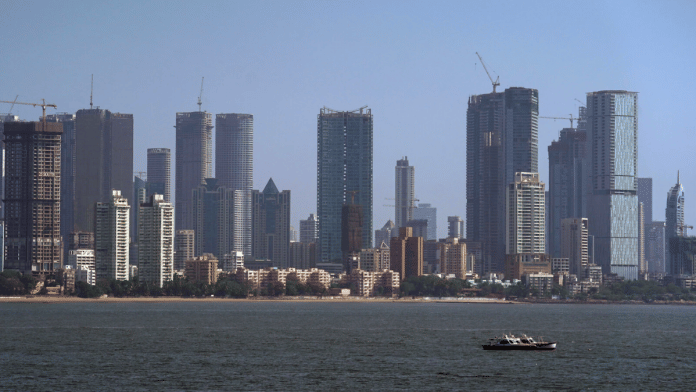Our world is undergoing a profound transformation with far-reaching consequences for our economic, social and environmental systems. This new era, being called by many as the Intelligent Age, is driven by unprecedented advancements in AI, robotics, biotechnology, quantum computing and digital infrastructure.
Just as the transition from an agricultural society to an industrial one transformed the global landscape, the Intelligent Age will redefine how we live, work and interact with the world around us.
Harnessing this revolution to address pressing challenges and seize its incredible opportunities requires collective effort and the involvement of all stakeholders. The World Economic Forum promotes public-private collaboration to develop policy frameworks, pilots and new approaches to technology regulation and adoption to ensure it benefits the planet and all people.
India in the Intelligent Age
India is at a pivotal point in its economic trajectory. A combination of policy stability, deepening economic reforms, robust domestic consumption and favourable demographic dividend has led to India becoming the fifth-largest global economy with a GDP of around $4 trillion.
India has been able to maintain a stable growth of 7-8% amid global uncertainties and disruptions and it remains the fastest-growing major economy and a bright spot for the world. Focus on infrastructure development and manufacturing has positioned it as a major global player. With its massive talent pool, its inherent knack for innovation and a strong government push for digital transformation, India has a unique opportunity to lead in this new era. The country’s rapid advancements in Digital Public Infrastructure (DPI) have been remarkable, showcasing India’s leadership in digital innovation and offering adaptable models for the world. To maintain its growth in the Intelligent Age, India must invest heavily in next-generation infrastructure.
Initiatives like the National Quantum Mission and India Semiconductor Mission are steps in the right direction. India must shift its focus from being a global hub for low-cost manufacturing to a leader in high-quality production and innovation. The Make in India initiative must now evolve into Make Smart in India, where AI, robotics and data analytics power factories.
India’s tech supply chain advantage
As new technologies like AI, IoT, and 5G become more pervasive, the demand for semiconductors is expected to skyrocket. The semiconductor industry can be a crucial determinant of India’s success in the Intelligent Age. India must simultaneously focus on attracting global semiconductor giants and fostering homegrown globally competitive companies. With targeted investments, talent promotion and strong international collaborations, India can consolidate and expand its position in the global semiconductor market.
India has another unique strategic advantage many other countries do not possess: a vast population that is generating an enormous amount of data every day that can be harnessed for innovation and unprecedented economic opportunities. India can also play a lead role in setting global standards for data governance and position itself as a thought leader in the global discourse on data ethics and governance and a champion for equitable benefit-sharing. The implementation of the Personal Data Protection Bill and a regulatory framework for data governance are important steps in this direction. More than half of India’s population is below 30, and they are adept at adopting and adapting to new digital technologies. The country also hosts a robust start-up ecosystem, with over 110 unicorns and around 130,000 start-ups driving innovation across various sectors. India can capture the immense potential of the digital age by unleashing a tsunami of entrepreneurship and becoming a global hub for innovation.
Enablers to leapfrog in the Intelligent Age
As the race for dominance in frontier technologies intensifies, India must augment investments in these strategic areas to avoid being left behind and to capitalize on their leapfrogging potential. India’s expenditure on R&D is less than 0.7% of its GDP — way below the global average of 1.8%. It must invest heavily in R&D in advanced technology, such as semiconductors. It must also prioritize developing talent through specialized education programmes, partnerships with global technology companies and investment in STEM education. The curriculum must evolve to include AI, machine learning and data science as core subjects and vocational training programmes must be tailored to equip the workforce with the skills needed for jobs in the Intelligent Age. Further, by focusing on enablers such as infrastructure, ease of doing business and good governance measures, India can set itself on the path to becoming a $10 trillion economy and achieve the Prime Minister’s vision of Viksit Bharat 2047.
Technology: A bridge not a barrier
Over the last decade, strong efforts by the government to promote broad-based development and good governance have contributed to record-pace elimination of multidimensional poverty and last-mile delivery of schemes and services to billions of people. India’s G20 presidency was also marked by an inclusive approach and demonstrated India’s commitment to a rules-based order that upholds sovereignty, equality and mutual respect. Its biggest example is the historic achievement of the African Union’s inclusion as a permanent member of the G20.
India’s advocacy for a future where technology serves as a bridge rather than a barrier is aligned with our mission to harness the potential of technological progress for the equitable and human-centred transformation of industries, economies and societies.
India’s model provides a template for the world to leverage technology as a catalyst for shared human progress without harming the environment. The World Economic Forum is proud to act as a partner to the Indian government to help realize this vision and advance our collective progress and prosperity in the Intelligent Age.
The author, Klaus Schwab is Founder, Executive Chairman, World Economic Forum.
This article first appeared in the World Economic Forum. Read the original piece here.






